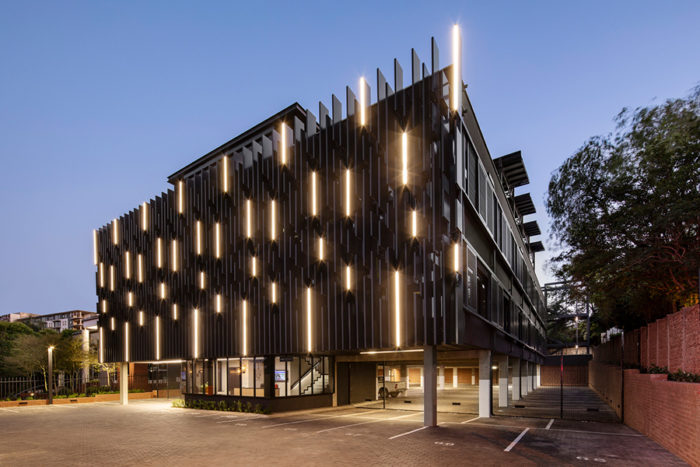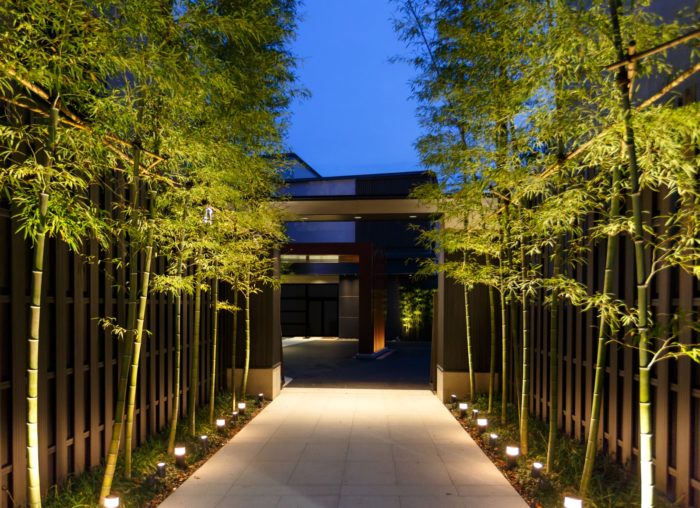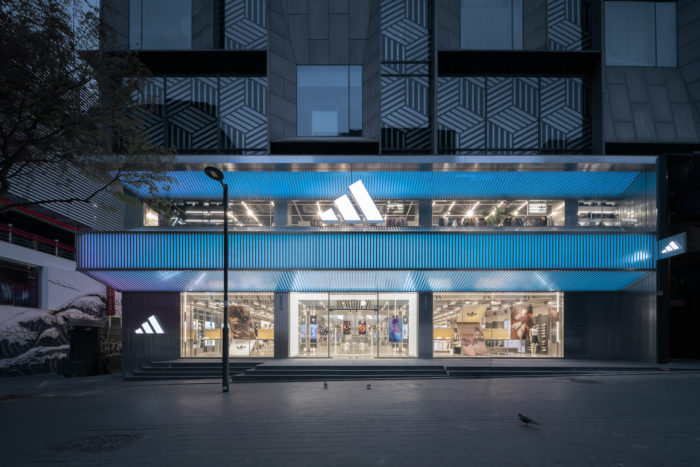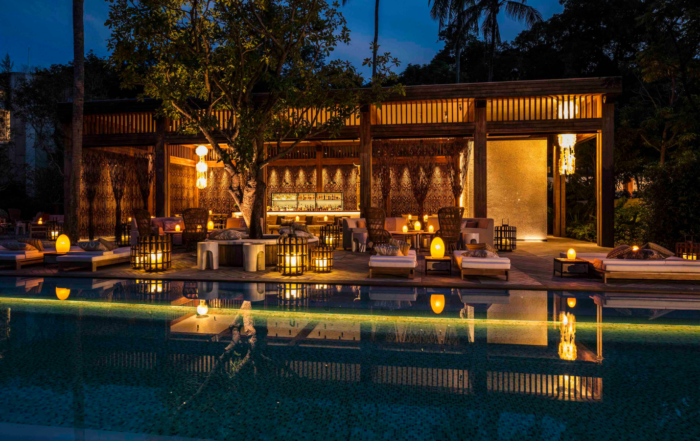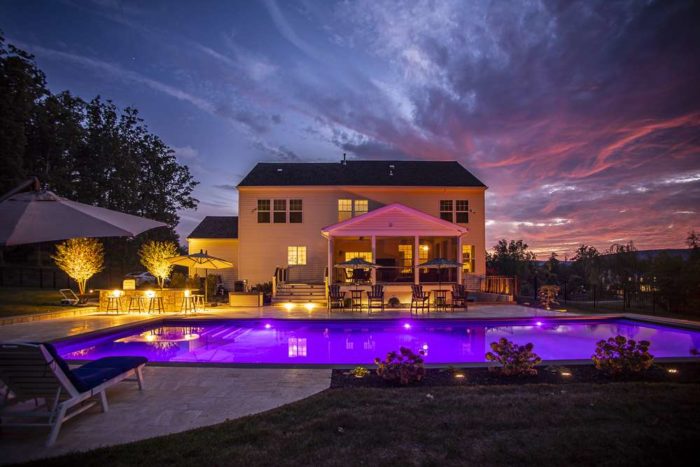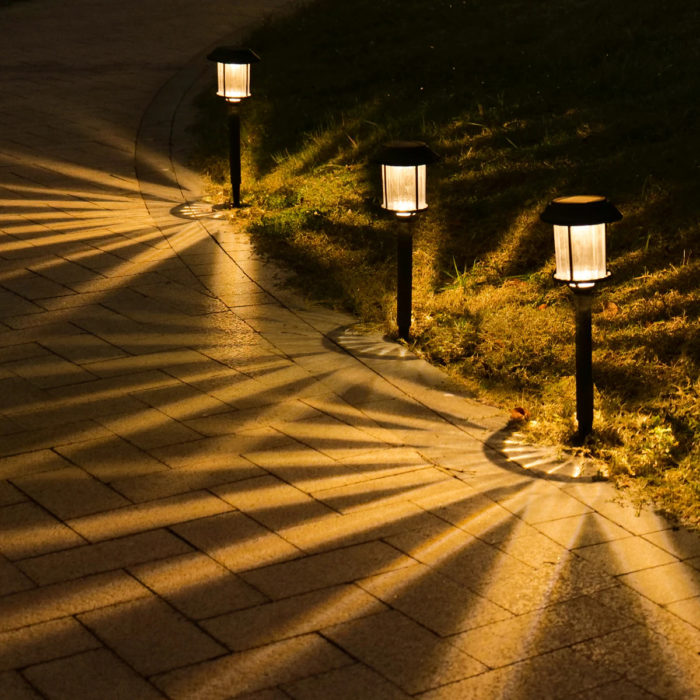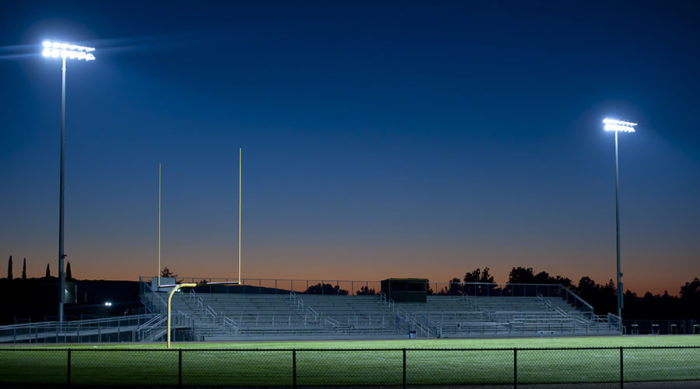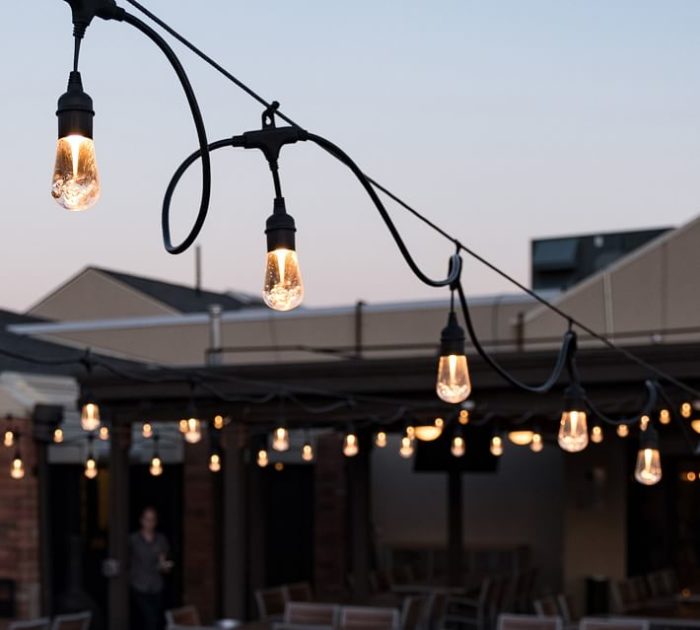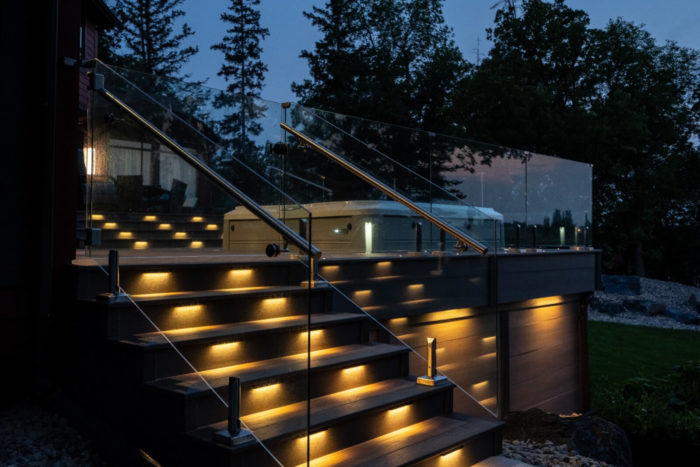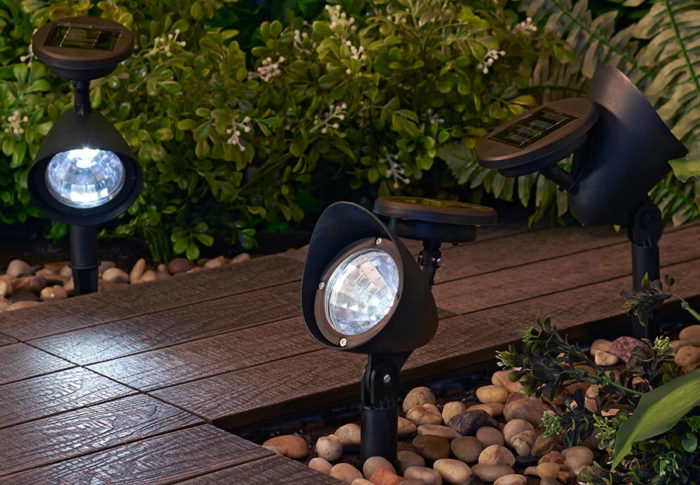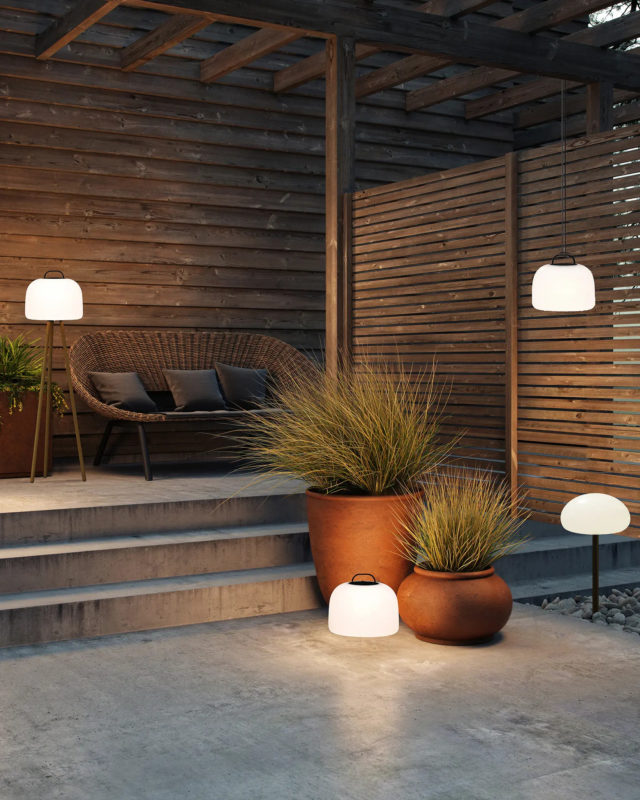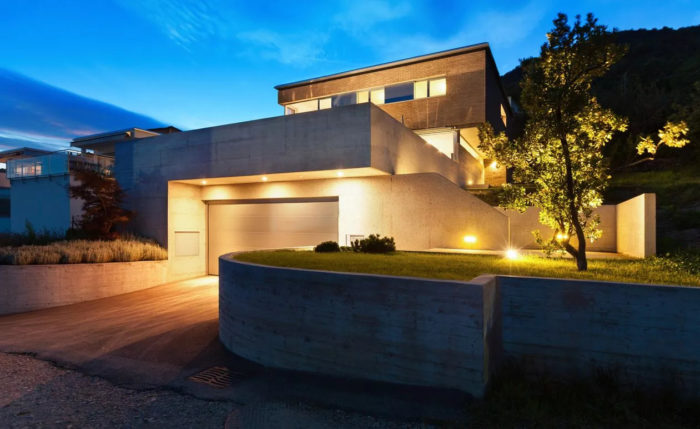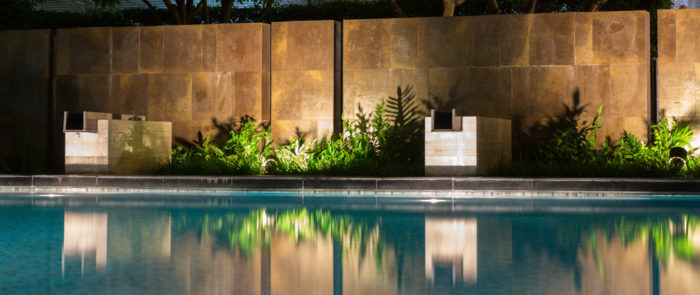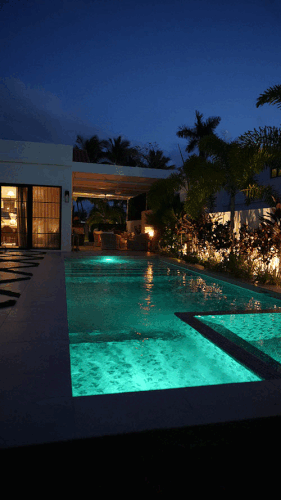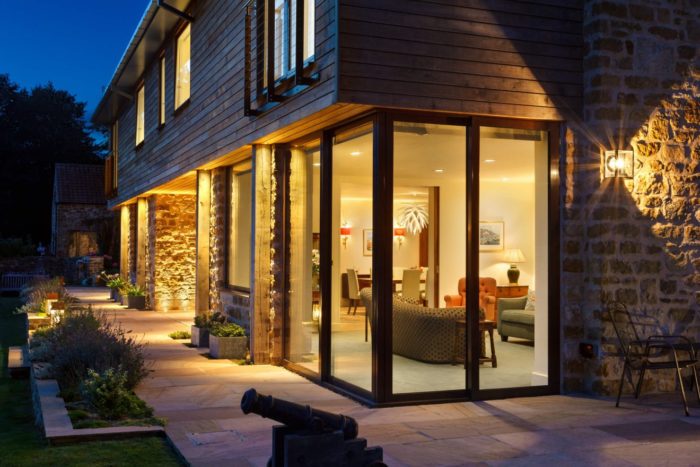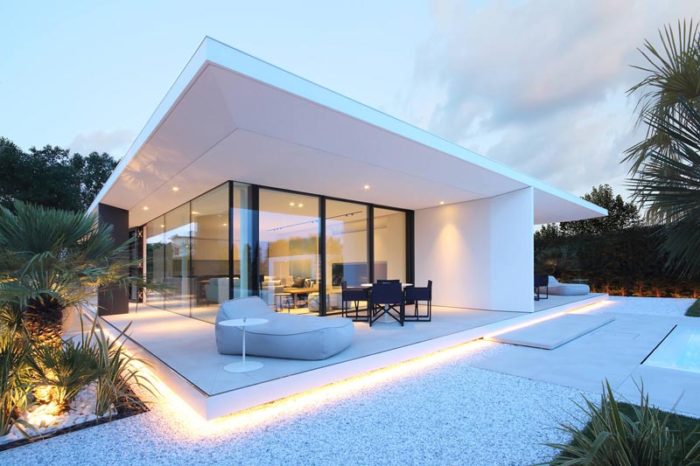Outdoor lighting is more than just a practical necessity; it’s a crucial element of architectural design that can transform a property into a stunning showcase, adding elegance, security, and ambiance to outdoor spaces. Whether you’re planning to revamp your outdoor lighting or working on a new project, this guide will illuminate the options for elegant outdoor accents and ambiance. We’ll explore various outdoor lighting fixtures, techniques, and trends to help you create a captivating outdoor environment.
Why Does Outdoor Lighting Matter?
Before diving into the specifics of outdoor lighting, it’s essential to understand why it matters in architectural design. Outdoor lighting serves several important purposes:
1) Safety and Security
Properly illuminated outdoor spaces enhance safety by reducing the risk of accidents and deterring intruders. Well-lit pathways, stairs, and entryways ensure that residents and visitors can move around confidently, even in the dark.
2) Aesthetic Appeal
Outdoor lighting enhances the visual appeal of a property. It highlights architectural features, landscaping, and focal points, turning them into eye-catching day or night elements. Outdoor lights are the brushstrokes that paint a masterpiece on your property’s canvas.
3) Extended Usability
Outdoor spaces can be enjoyed long after the sun sets with the proper lighting. Whether it’s a cozy patio, a secret garden, or a poolside retreat, outdoor lights extend the usability of these areas, allowing you to entertain or relax into the evening.
4) Mood and Ambiance
Outdoor lighting sets the mood and ambiance of your outdoor areas. Whether you want a warm, intimate atmosphere or a vibrant, energetic vibe, the type and placement of outdoor lights play a pivotal role in achieving your desired ambiance.
Types of Outdoor Light Fixtures
Choosing the right outdoor light fixtures is crucial to achieving the desired lighting effect. Here are some popular options:
- Path Lights
Path lights are a staple in outdoor lighting design. These fixtures are typically low to the ground and are used to illuminate walkways, driveways, and garden paths. They guide people safely and add a touch of elegance to your landscape.
- Wall Sconces
Wall sconces are fixtures mounted on vertical surfaces, such as walls and pillars. They provide functional and decorative lighting and are commonly used near entryways, patios, and outdoor living spaces. Wall sconces come in various styles, from traditional lanterns to modern, minimalist designs.
- Floodlights
Floodlights are powerful fixtures that cast a wide beam over a large area. They illuminate large outdoor spaces like driveways, sports courts, and expansive gardens. Floodlights enhance security by eliminating dark corners and shadows.
- String Lights
String lights are a trendy and versatile outdoor lighting option. They consist of a string of small bulbs connected and can be hung across trees, pergolas, or outdoor seating areas to create a magical, fairy-tale-like atmosphere. String lights are perfect for adding a warm and inviting glow to your outdoor gatherings.
- Deck and Step Lights
Deck and step lights are designed to be installed on the surface of decks, stairs, and outdoor seating areas. They provide subtle, low-level lighting to prevent tripping hazards and create an inviting ambiance.
- Landscape Spotlights
Landscape spotlights are ideal for highlighting specific features in your garden, such as statues, trees, or water features. They add depth and drama to your landscape by directing focused beams of light onto chosen focal points.
- Pendant Lights
Pendant lights are suspended from overhead structures, such as pergolas or covered patios. They add a touch of sophistication to outdoor dining areas and create a cozy, intimate atmosphere.
Outdoor Lighting Techniques
To achieve the best results with outdoor lighting, it’s essential to consider various techniques and principles:
1) Layered Lighting
Just like indoor spaces, outdoor areas benefit from layered lighting. This involves combining different types of outdoor lights to create depth and balance. For example, you can pair path lights with landscape spotlights and string lights to achieve a harmonious blend of functional and decorative illumination.
2) Up-Lighting and Down-Lighting
Up-lighting involves placing fixtures at ground level to cast light upward, emphasizing architectural details or trees. On the other hand, down-lighting involves fixtures placed above, such as on tree branches or eaves, to cast light downward, creating soft, moonlight-like effects. These techniques are excellent for creating drama and highlighting focal points.
3) Silhouetting
Silhouetting is a creative technique where a light source is placed behind an object, such as a statue or plant, to create a dramatic silhouette against a wall or background. This technique adds a touch of mystery and intrigue to your outdoor space.
4) Moonlighting
Moonlighting involves placing fixtures high in trees to mimic the soft, diffuse light of the moon. This technique creates a serene, natural ambiance and is perfect for outdoor dining or quiet retreats.
5) Zoning and Dimming
Zoning allows you to control different areas of your outdoor space independently. By using dimmers and smart lighting controls, you can adjust the brightness of specific zones to match the desired mood and ambiance.
Outdoor Lighting Trends
Keeping up with the latest trends is essential to stay ahead in outdoor lighting design. Here are some of the current trends in outdoor lighting:
- LED Lighting
LED (Light Emitting Diode) technology has revolutionized outdoor lighting. LED lights are energy-efficient, long-lasting, and available in various colors and styles. They are the go-to choice for both residential and commercial outdoor lighting projects.
- Smart Lighting Systems
Smart outdoor lighting systems allow you to control your lights remotely using a smartphone or voice commands. You can schedule lighting presets, change colors, and even integrate outdoor lighting with other smart home devices for added convenience and security.
- Dark Sky Lighting
Dark Sky lighting is an environmentally conscious trend that focuses on reducing light pollution. It uses fixtures that direct light downward and shields it from spreading into the night sky. Dark Sky-compliant fixtures help protect the natural beauty of the night sky and conserve energy.
- Natural Materials
Outdoor light fixtures from natural materials like wood, stone, and copper are gaining popularity. These fixtures blend seamlessly with outdoor environments, adding a rustic and organic touch to your lighting design.
- Minimalist Designs
Modern architecture often incorporates minimalist outdoor lighting fixtures that feature sleek lines and simple shapes. These fixtures complement contemporary design aesthetics and create a clean and uncluttered look.
Outdoor Lighting Tips for Architects
As an architect, here are some valuable tips to consider when designing outdoor lighting for your projects:
1) Plan Early
Integrate outdoor lighting into the initial design phase of your project. This ensures that wiring and fixtures can seamlessly incorporate, avoiding costly modifications later.
2) Consider Energy Efficiency
Opt for energy-efficient LED outdoor light fixtures to minimize long-term energy costs and reduce the environmental impact of your project.
3) Collaborate with Lighting Experts
Work closely with lighting designers or consultants who specialize in outdoor lighting. Their expertise can help you achieve the desired lighting effects and ambiance while adhering to safety and regulatory requirements.
4) Stay Informed About Regulations
Familiarize yourself with local building codes and regulations regarding outdoor lighting. Compliance is essential to avoid potential legal issues and ensure the safety of your clients.
5) Embrace Creativity
Don’t be afraid to explore creative and innovative lighting solutions. Outdoor lighting is an art form that can elevate the aesthetics of your architectural designs.
In a Nutshell
Outdoor lighting is a powerful tool for architects, transforming outdoor spaces into elegant and inviting environments. By choosing the right outdoor light fixtures, employing effective lighting techniques, and staying updated with current trends, architects can create outdoor spaces that are safe, functional, visually stunning, and emotionally captivating. So, as you embark on your next architectural project, remember that outdoor lighting is not just about illuminating the night; it’s about inspiring the possibilities of design.


